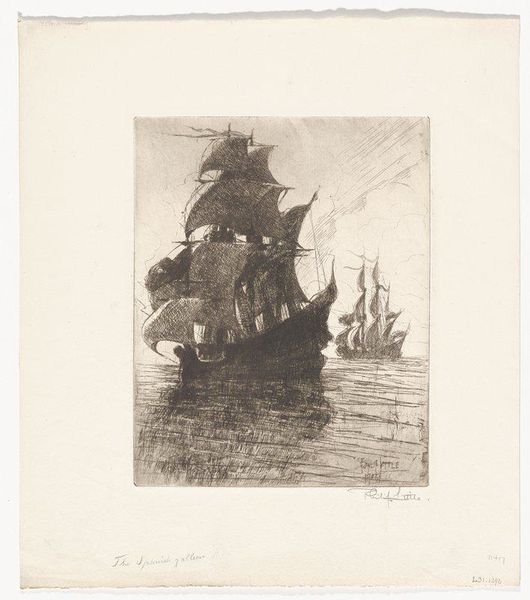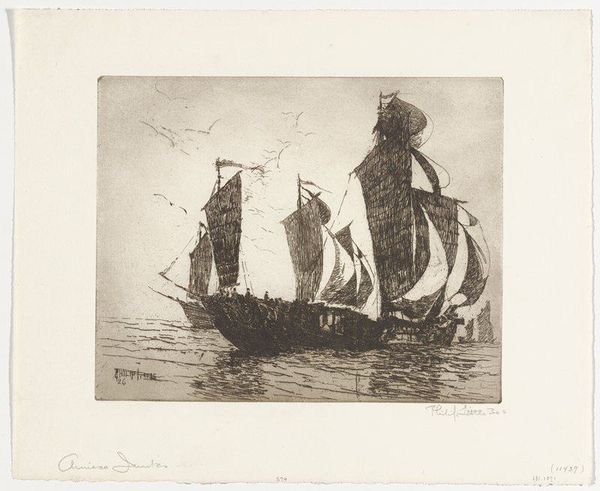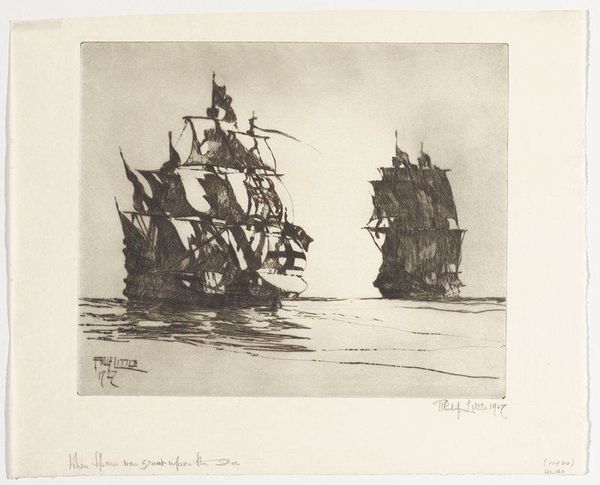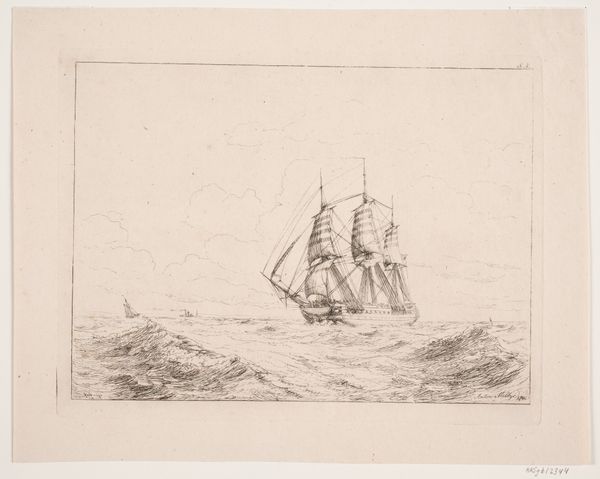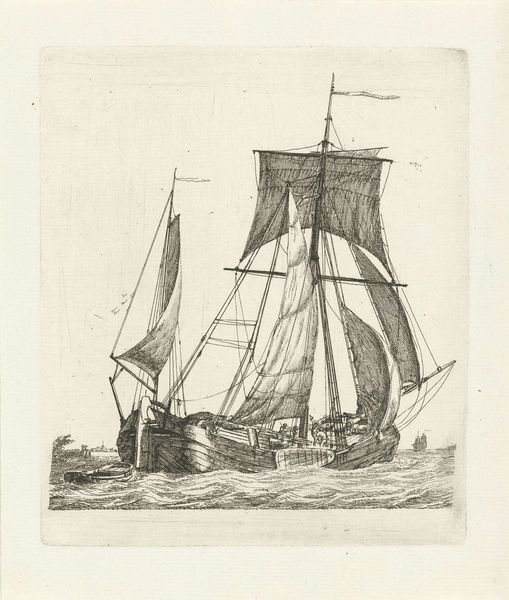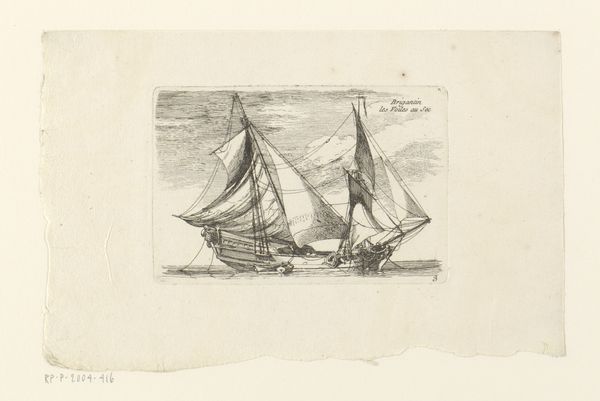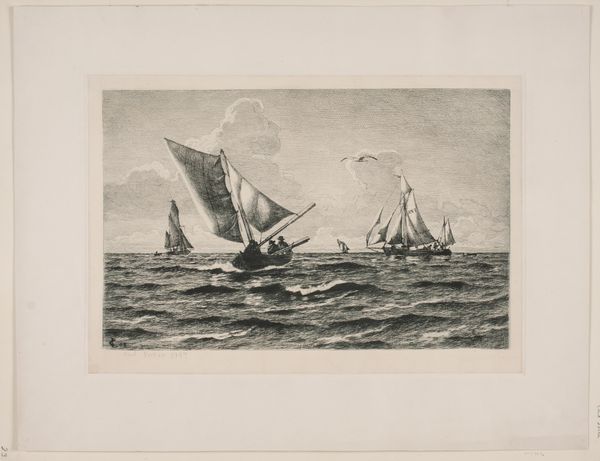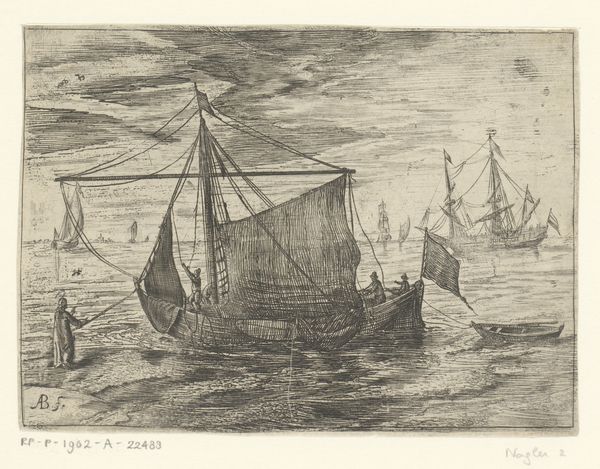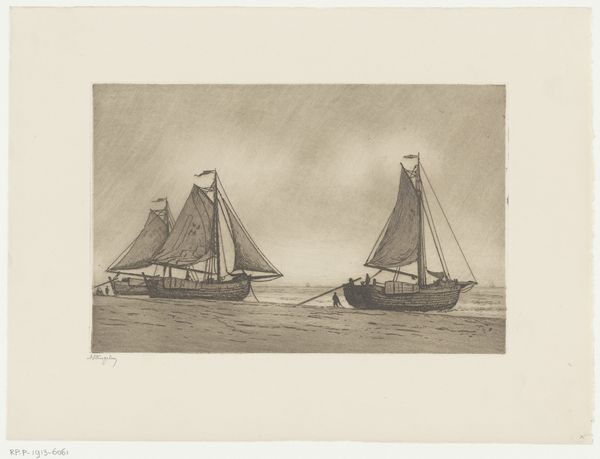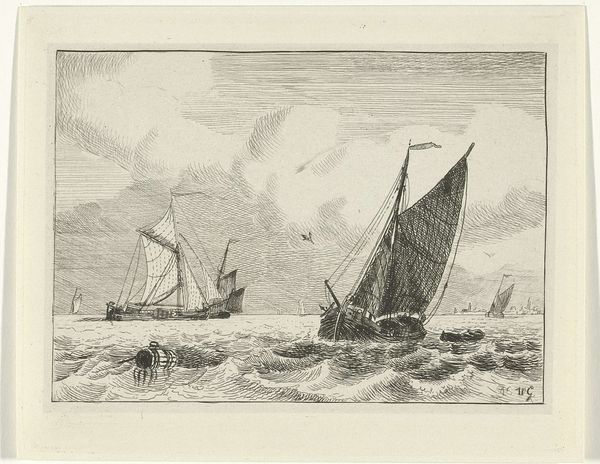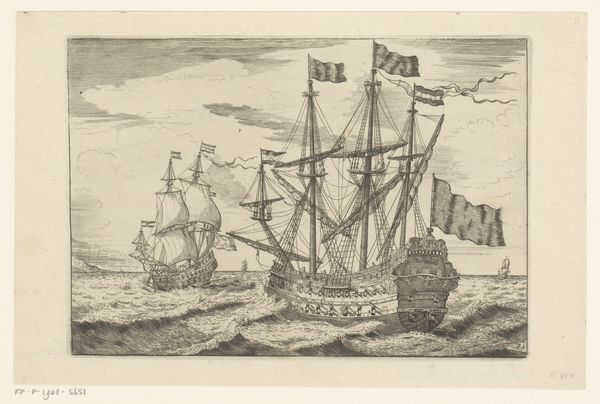
print, etching, paper, ink
# print
#
etching
#
landscape
#
paper
#
ink
#
united-states
#
cityscape
#
watercolour illustration
Dimensions: 7 13/16 x 9 7/8 in. (19.84 x 25.08 cm) (plate)11 1/2 x 15 in. (29.21 x 38.1 cm) (sheet)
Copyright: No Copyright - United States
Curator: Here we have Philip Little’s “Going to Sea – 1700”, an etching and ink print on paper from 1926, held here at the Minneapolis Institute of Art. What do you make of this scene? Editor: Well, it’s evocative, I’ll give it that. The artist really captured the immensity of the ships with these deep blacks and sharp lines on a light backdrop. I am curious about how he manipulated the materials to suggest movement, the way the lines bleed into the water makes them seem to dance. Curator: Interesting that you noted the dark values. It is indeed dramatic, perhaps suggestive of the very real dangers those ships and their crews faced. During this time, nautical themes often appeared in American art, referencing trade, immigration, and naval power. But this also ties into printmaking as a democratic art form, accessible and reproducible for the masses. Editor: Right, the tension between high seas adventure and the practical means to produce these artworks is hard to ignore. Look at the detail; those are certainly handmade, skillfully etched lines that carry their own historical weight. How was the paper itself sourced? What inks were used, and who mixed them? These materials tell their own stories of labor and exchange. Curator: Absolutely. And let's consider its early reception, beyond those who could afford original paintings. Printmaking made art available to a wider public, fostering shared cultural understanding but also political debates, particularly in an era of social change. The original title and year appear to be slightly at odds too: 'Going to Sea - 1700' was etched by Philip Little in 1926. Editor: True. It brings up questions about Little's motives when recontextualizing ships of the 1700's in 1926. I mean, beyond nostalgia, why replicate an old seascape in an industrial medium? Was it for easy replication and profit, or perhaps something more? Curator: Food for thought indeed. This print invites us to consider both the grand narratives of history and the tactile realities of artistic production. Editor: And perhaps more about the markets and conditions which bring artworks and their associated stories to life in our own present day.
Comments
No comments
Be the first to comment and join the conversation on the ultimate creative platform.
